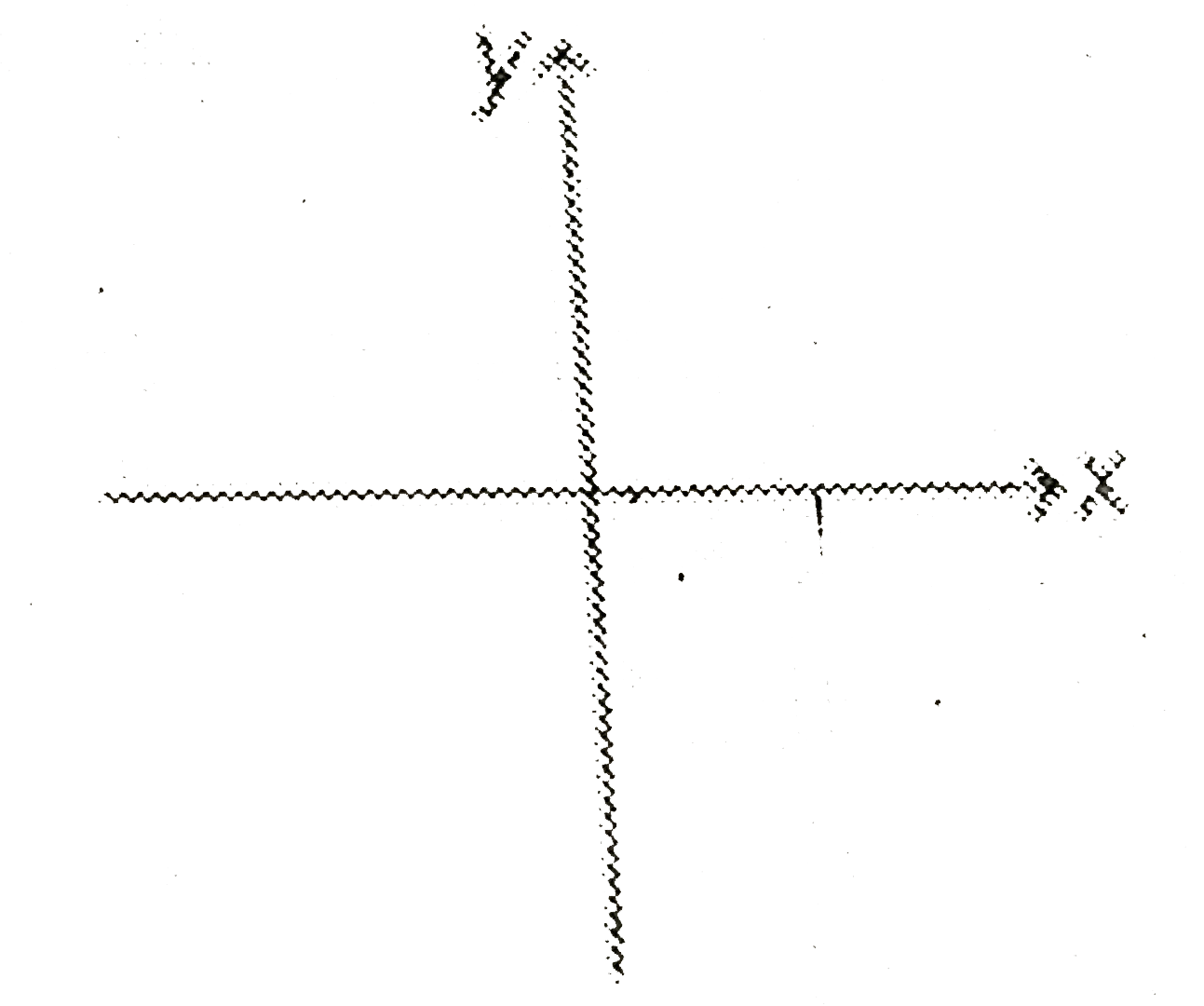A point mass oscillates along the x-axis according to the law x=x0cos(ωt−π/4). If the acceleration of the particle is written as a=Acos(ωt+δ), the .
A=x0ω2,δ=3π4
A=x0,δ=−π4
A=x0ω2,δ=π4
A=x0ω2,δ=−π4
The correct Answer is:A
To solve the problem, we need to find the acceleration of a point mass oscillating along the x-axis given by the equation:
x=x0cos(ωt−π4)
We want to express the acceleration in the form:
a=Acos(ωt+δ)
1. Identify the displacement function:
The displacement of the particle is given by:
x=x0cos(ωt−π4)
2. Differentiate to find velocity:
To find the velocity v, we differentiate x with respect to time t:
v=dxdt=ddt(x0cos(ωt−π4))
Using the chain rule:
v=−x0ωsin(ωt−π4)
3. Differentiate to find acceleration:
Now, we differentiate the velocity v to find the acceleration a:
a=dvdt=ddt(−x0ωsin(ωt−π4))
Again, using the chain rule:
a=−x0ω2cos(ωt−π4)
4. Rewrite the acceleration:
We can rewrite the cosine term using the angle addition formula:
a=−x0ω2cos(ωt−π4)=x0ω2cos(ωt+3π4)
This is because:
cos(θ)=−cos(θ+π)
5. Identify A and δ:
Now, we can compare this with the given form a=Acos(ωt+δ):
A=x0ω2andδ=3π4
6. Final result:
Therefore, we have:
a=x0ω2cos(ωt+3π4)
Conclusion:
From the above steps, we conclude that:
- A=x0ω2
- δ=3π4
The correct option is:
- a=x0ω2 and δ=3π4
---
The displacement of the particle is given by:
x=x0cos(ωt−π4)
To find the velocity v, we differentiate x with respect to time t:
v=dxdt=ddt(x0cos(ωt−π4))
Using the chain rule:
v=−x0ωsin(ωt−π4)
Now, we differentiate the velocity v to find the acceleration a:
a=dvdt=ddt(−x0ωsin(ωt−π4))
Again, using the chain rule:
a=−x0ω2cos(ωt−π4)
We can rewrite the cosine term using the angle addition formula:
a=−x0ω2cos(ωt−π4)=x0ω2cos(ωt+3π4)
This is because:
cos(θ)=−cos(θ+π)
Now, we can compare this with the given form a=Acos(ωt+δ):
A=x0ω2andδ=3π4
Therefore, we have:
a=x0ω2cos(ωt+3π4)
From the above steps, we conclude that:
- A=x0ω2
- δ=3π4
- a=x0ω2 and δ=3π4
Topper's Solved these Questions
- OSCILLATIONS BOOK - NCERT FINGERTPS ENGLISHCHAPTER - OSCILLATIONS EXERCISE - Higher Order Thinking Skills
8 Videos
- OSCILLATIONS BOOK - NCERT FINGERTPS ENGLISHCHAPTER - OSCILLATIONS EXERCISE - Exemplar Problems
9 Videos
- MOTION IN A STRAIGHT LINEBOOK - NCERT FINGERTPS ENGLISHCHAPTER - MOTION IN A STRAIGHT LINEEXERCISE - NCERT Exemplar
6 Videos
- PHYSICAL WORLDBOOK - NCERT FINGERTPS ENGLISHCHAPTER - PHYSICAL WORLDEXERCISE - Assertion And Reason
10 Videos
Similar Questions
A point mass oscillates along the x-axis according to the law x=x0cos(ωt−π/4). If the acceleration of the particle is written as a=Acos(ωt+δ), the .
View SolutionA particle moves on the X-axis according to the equation x=x0sin2ωt. The motion simple harmonic
View SolutionA particle moves in the x−y plane , accoding to the equation, r=(ˆi+2ˆj)Acosωt. The motion of the particle is
View SolutionA particle oscillates with S.H.M. according to the equation x=10cos(2πt+π4). Its acceleration at t=1.5s is
View SolutionA particle moves along the x-axis according to the equation x=asinωt+bcosωt. The motion is simple harmonic with
View SolutionA particle moves on the X-axis according to the equation x=5sin2ωt. The motion simple harmonic
View SolutionA particle with a mass of 0.2 kg moves according to the law
s=0.08cos(20πt+π4)
Find the velocity of the particle, its acceleration and the acting force, as well as the amplitudes of the respective quantities.
View SolutionA particle moves along x-axis according to relation x=1+2sinωt. The amplitude of S.H.M. is
View SolutionA xandy co-ordinates of a particle are x=Asin(ωt)andy=Asin(ωt+π/2). Then, the motion of the particle is

View SolutionThe displacement of a particle is represented by the equation y=3cos(π4−2ωt).
The motion of the particle is
View Solution
